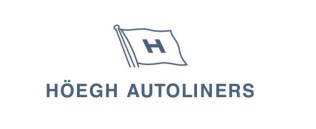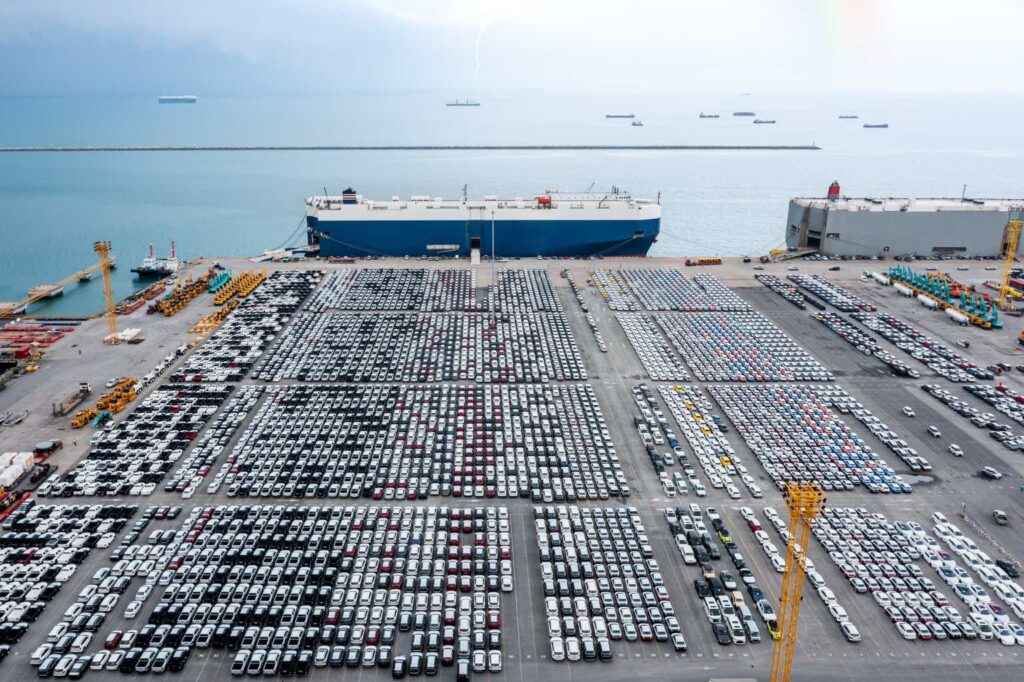Hoegh Autoliners logo (Hoegh Autoliners ASA)
Investment Thesis
In the past, shipowners used to be their worst enemies, as there was a tendency of exuberant optimism which often led to over-capacity from too many new ships being built.
However, over this last decade, the pendulum swung probably too much the other way. In many shipping sectors, such as crude oil tankers and large dry-bulk vessels, the orderbook has been on the low side. Container ships are probably the exception, where we have a large orderbook.
Transportation of cars is one niche market that has been serviced mainly by a handful of shipowners. With under-investments in fleet renewal and growth, combined with growing demand, daily rates have gone from $20/30,000 to more than $100,000 per day.
One benefactor from this is Höegh Autoliners ASA (OTCPK:HOEGF).
We have some exposure to this market through shares in SFL Corporation (SFL) but would like to explore if it is worth investing in one of the main owners and operators, such as Höegh Autoliners ASA
Background
HOEGF is a leading global provider of Roll On Roll Off transportation services delivering cars, high and heavy, and breakbulk cargoes across the world. The Company operates around 35 specialized RoRo vessels in a global trade system that includes about 3,000 port calls each year.
They also have 12 newbuilds in Korea, where the first vessel is being delivered this month, with the balance of the vessels coming spread out over the next three years.
The last four of the 12 vessels will be delivered with ammonia propulsion, allowing them to go to zero carbon in the future.
Hoegh Autoliners new Aurora class vessels (Hoegh Autoliners ASA)
The company is part of Leif Höegh Group, which will celebrate its 100th anniversary in 2027. It is domiciled in Oslo, Norway, and listed on the Oslo Stock Exchange. Market capitalization is USD 1.88 billion.
In the U.S., it is only trading on the OTC market as Höegh Autoliners ASA. This is an illiquid market, so for those who have an interest in exploring an investment in this company, we would suggest they look at their main listing in Oslo.
Pre-Q2 Financial Results
On the 8th of July, HOEGF announced a trading update for the coming quarterly result, which will come out on the 14th of August.
The total transported cargo in Q2 of 2024 was 3.5 million cubic meters, with an average net freight rate of $83.2 per cbm. This is in line with the $83.6 per cbm. They achieved in Q1 of this year.
As much as 75% of their revenue came from their long-term strategic customers.
From cash from operation in Q1 of $165 million, they paid out $360 million in dividends. This was the Q4 dividend, which was announced as $1.90 per share. For the Q1 period, the dividend was reduced to $0.57 per share. That worked out to about $107 million. It is well covered by cash from the operation.
On the back of the trading update for Q2, which had a similar net freight rate, we believe the dividend for Q2 will be similar to the $0.57 they declared last month.
Share prices are tumbling globally at the time of writing this. On Monday, the 5th of August, it opened down nearly 10% at NOK103 and after picking up some midday, is changing hands at NOK108. At that price, and assuming that they will be able to pay out $0.57 each quarter this year, we get a forward yield of 23%.
The balance sheet is good. Their net debt was $328 million as of the end of Q1, which equates to a net interest-bearing debt-to-EBITDA ratio of only 0.5%.
To pay for the 12 new vessels, HOEGF has secured a $720 million facility from eight leading banks with a tenure of six years, up to April 2030. After the completion of that transaction, as many as 24 of their vessels are debt-free.
As of the end of last year, the total commitment for the newbuild program was $1.2 billion, of which $943 million has been financed by loans and leases. The remaining $284 million is the equity portion, of which $234 million has already been paid.
Valuation
We always need to ask ourselves, what is it worth?
If we look at the EPS of $3.06 on a TTM basis, we do get a very low P/E of just 3.26
The EPS in Q4 last year was $1.03 which was helped by a one-time profit of $35.8 million from the sale of a vessel. If we strip this out, we get an operating profit per share of $0.84
On an FWD basis, we estimate EPS to be $0.85 per quarter. The FWD P/E is therefore 3.02
The book value of the equity at the end of Q1 was $1,167 million. With 191.6 million shares outstanding, we get a book value per share of $6.09
Based on HOEGF’s latest share price of $10.30, the P/B is 1.69 which is not particularly attractive.
Risk to thesis
According to HOEGF, the orderbook, as of April this year, was 206 vessels, or 39% of the fleet on the ocean.
Newbuilding orders and spike in TC rates (Hoegh Autoliners ASA Q1 of 2024 Presentation)
With the delivery of these larger and more economic vessels coming gradually into the market, we do not see an imminent risk to HOEGF. However, it is not realistic to expect rates to stay above $100,000 per day.
One potential risk is an escalation towards EV export from China. In our latest article on BlackRock’s iShares MSCI China A ETF (CNYA), we have more information on the current development of China’s export of EVs.
At this moment, China is trying to find other markets than the EU to substitute the export of their EVs. Southeast Asia is one of them, but this requires much shorter sea voyages than that of the EU. Another area is Latin America, where the sea voyages are longer.
Fleet utilization will also improve once shipowners can send their vessels through the Suez Canal and the Red Sea. HOEGF estimated in their Q1 presentation that the annual loss of volume is approx. 800,000-900,000 cbm, if the Red Sea situation persists.
We do not wish to speculate on when the conflicts there will end. But when it does end, it is likely going to cause the freight rate for many shipping markets to be lower than what we now see.
Ultimately, a risk is that the dividend will be lower, but here again, it is not realistic to have long periods of dividends that yields above 20%.
Conclusion
We are optimistic about the Pure Car Carrier and RoRo segment for the coming two to three years. This optimism is based on healthy supply and demand dynamics.
We also think that HOEGF is well-managed, well-financed, and in a good position to cater to the major car manufacturers’ quest for reducing their carbon footprint. This is going to be more important going forward.
As such, we initiate coverage of Höegh Autoliners ASA with a Buy call.
Editor’s Note: This article discusses one or more securities that do not trade on a major U.S. exchange. Please be aware of the risks associated with these stocks.
Read the full article here



